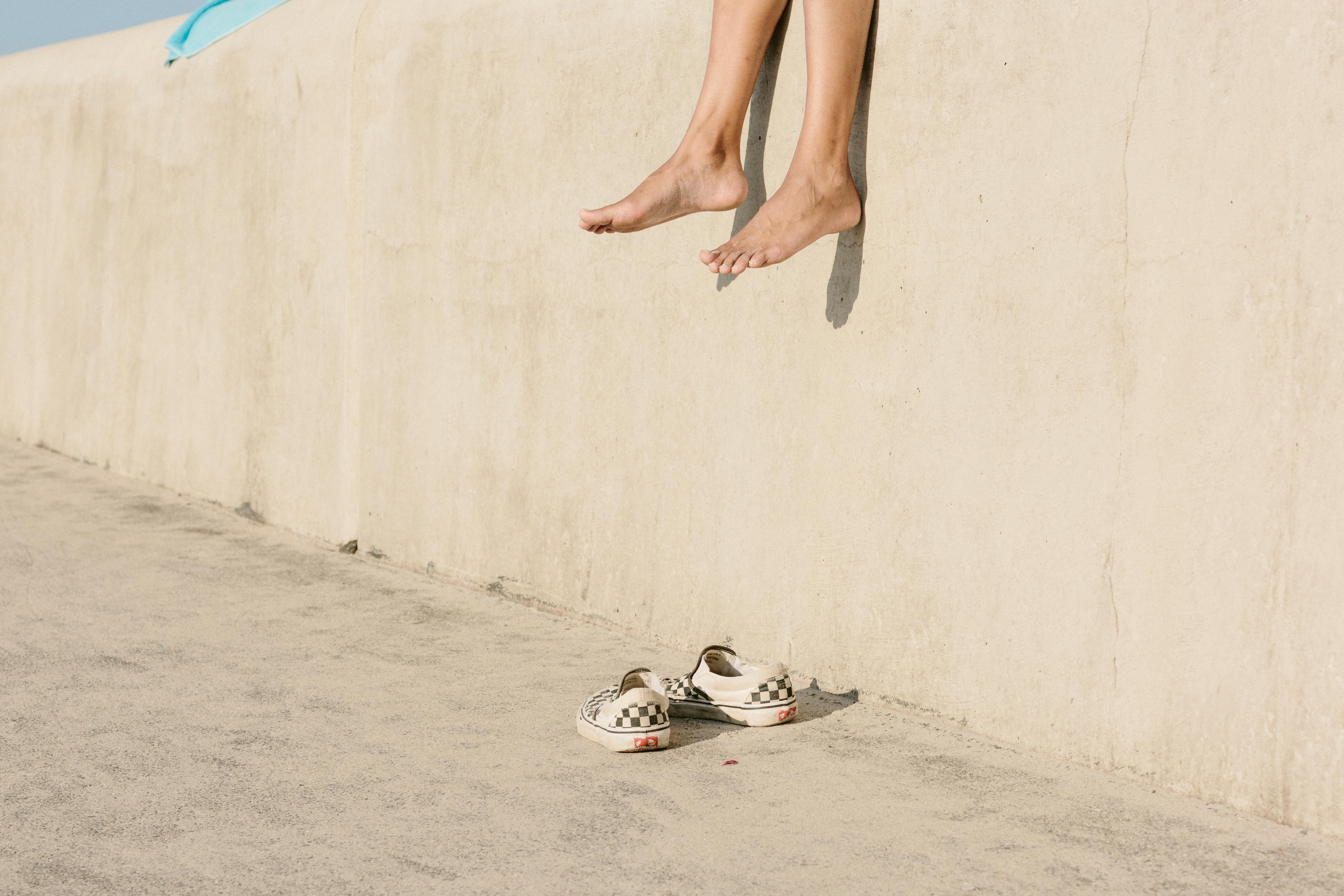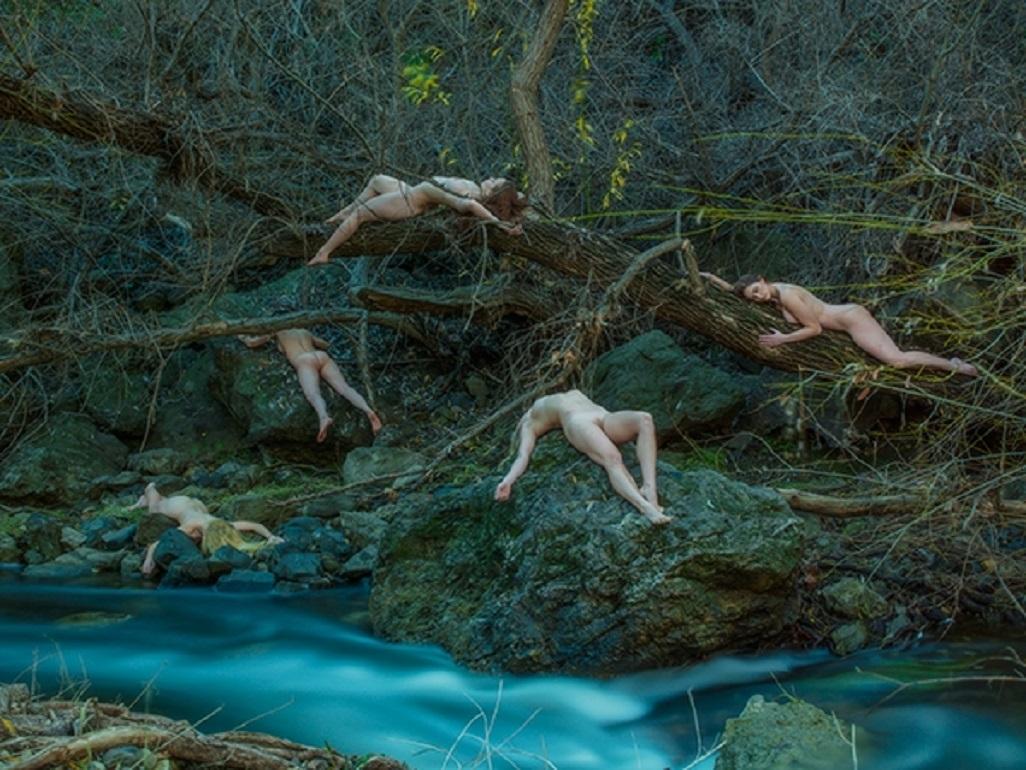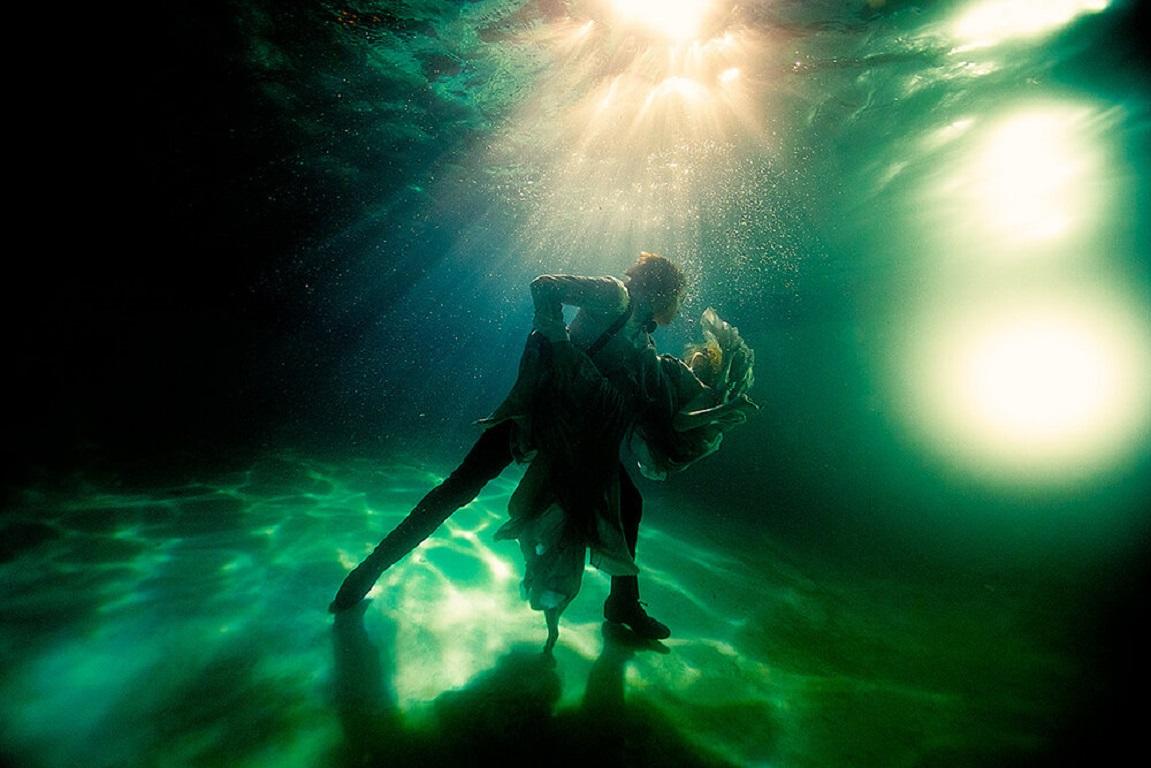Items Similar to Once Upon a Time: Piel de Asno.
Want more images or videos?
Request additional images or videos from the seller
1 of 9
Fernando BayonaOnce Upon a Time: Piel de Asno.2015
2015
About the Item
Fernando Bayona,
Once Upon a Time: "Piel de Asno".
Fine Art Inkjet Print
Sizes:
S: 25.6 x 20.8 in. / Ed. 3
M: 41.7 x 33 in. / Ed. 3
L: 53.1 x 41.7 in. / Ed. 2 + 1A.P
"The narrative power of the artist's images is sustained and complemented by impeccable manufacturing and technique. From the preproduction moment up until the last edition, it is sought that each of the details of framing, lighting, layout and conceptualization be carefully planned, executed and justified. Bayona defends the construction of his theatricality through these technical and conceptualization procedures, thus continuing with his constant analysis of the central notions of human behaviour in which the autobiographical and the reflexive interweave with the religious, the documentary and the political."
-Alberto Ríos de la Rosa, Art Historian.
*Limited editions, certified, signed and numbered. Produced with museum standards.
- Creator:Fernando Bayona (1950, Spanish)
- Creation Year:2015
- Dimensions:Height: 25.6 in (65.03 cm)Width: 20.8 in (52.84 cm)
- More Editions & Sizes:41.7 x 33 in, Edition of 3Price: $4,50053.14 x 41.73 in, Edition of 2 + 1 A.PPrice: $6,000
- Medium:
- Movement & Style:
- Period:
- Condition:
- Gallery Location:Ciudad De México, MX
- Reference Number:1stDibs: LU1842210500682
About the Seller
No Reviews Yet
Vetted Seller
These experienced sellers undergo a comprehensive evaluation by our team of in-house experts.
1stDibs seller since 2022
- ShippingRetrieving quote...Ships From: Ciudad De México, Mexico
- Return PolicyThis item cannot be returned.
More From This SellerView All
- HUICHOL: MOUNTAIN, DESERT, NEW YORK (`95-`21)By PABLO ORTIZ-MONASTERIOLocated in Ciudad De México, MXThe first person to photograph the Huichol in their remote communities in the inaccessible canyons of the Western Sierra Madre was probably the Norwegian anthropologist, Carl Lumholtz. He ventured into their territory in 1895, shortly before the arrival of the French naturalist and ethnographer Léon Diguet, who was also a photographer. Like so many who were engaged with documenting Indigenous peoples across the Americas in those brutal years of expansion and settlement, Lumholtz believed that the disappearance of his subjects was inevitable: “the weaker must succumb to the stronger, and the Indians will ultimately all become Mexicans.” The photographs of the Huichol by Pablo Ortiz Monasterio—taken on some twenty trips over the past three decades—prove that Lumholtz was fortunately, terribly wrong. They reveal abundant evidence of cultural survival (what the Huichol call “la costumbre”), made possible by their extraordinary resistance to the religious, nationalist, and economic forces that have long assaulted—and that continue to assault—Indigenous communities everywhere. Though Ortiz Monasterio is also an outsider, he does not operate—like Lumholtz or Diguet—as an old-fashioned preservationist, nor is he confident in the superiority of Western culture, nor is his work only destined for museum vitrines...Category
1990s Contemporary Color Photography
MaterialsInkjet, Archival Pigment
- HUICHOL: MOUNTAIN, DESERT, NEW YORK (`95-`21). Limited edition of 5.By PABLO ORTIZ-MONASTERIOLocated in Ciudad De México, MXDocumentary Photograph. Contemporary Inkjet on cotton. Limited edition of 5. Signed front and verso. Framed in lacquered black frame with spacer) The first person to photograph the Huichol in their remote communities in the inaccessible canyons of the Western Sierra Madre was probably the Norwegian anthropologist, Carl Lumholtz. He ventured into their territory in 1895, shortly before the arrival of the French naturalist and ethnographer Léon Diguet, who was also a photographer. Like so many who were engaged with documenting Indigenous peoples across the Americas in those brutal years of expansion and settlement, Lumholtz believed that the disappearance of his subjects was inevitable: “the weaker must succumb to the stronger, and the Indians will ultimately all become Mexicans.” The photographs of the Huichol by Pablo Ortiz Monasterio—taken on some twenty trips over the past three decades—prove that Lumholtz was fortunately, terribly wrong. They reveal abundant evidence of cultural survival (what the Huichol call “la costumbre”), made possible by their extraordinary resistance to the religious, nationalist, and economic forces that have long assaulted—and that continue to assault—Indigenous communities everywhere. Though Ortiz Monasterio is also an outsider, he does not operate—like Lumholtz or Diguet—as an old-fashioned preservationist, nor is he confident in the superiority of Western culture, nor is his work only destined for museum vitrines...Category
1990s Contemporary Color Photography
MaterialsInkjet, Archival Pigment
- HUICHOL: MOUNTAIN, DESERT, NEW YORK (`95-`21). Limited edition of 5.By PABLO ORTIZ-MONASTERIOLocated in Ciudad De México, MXDocumentary Photograph. Contemporary Inkjet on cotton. Limited edition of 5. Signed front and verso. Framed in lacquered black frame with spacer) The first person to photograph the Huichol in their remote communities in the inaccessible canyons of the Western Sierra Madre was probably the Norwegian anthropologist, Carl Lumholtz. He ventured into their territory in 1895, shortly before the arrival of the French naturalist and ethnographer Léon Diguet, who was also a photographer. Like so many who were engaged with documenting Indigenous peoples across the Americas in those brutal years of expansion and settlement, Lumholtz believed that the disappearance of his subjects was inevitable: “the weaker must succumb to the stronger, and the Indians will ultimately all become Mexicans.” The photographs of the Huichol by Pablo Ortiz Monasterio—taken on some twenty trips over the past three decades—prove that Lumholtz was fortunately, terribly wrong. They reveal abundant evidence of cultural survival (what the Huichol call “la costumbre”), made possible by their extraordinary resistance to the religious, nationalist, and economic forces that have long assaulted—and that continue to assault—Indigenous communities everywhere. Though Ortiz Monasterio is also an outsider, he does not operate—like Lumholtz or Diguet—as an old-fashioned preservationist, nor is he confident in the superiority of Western culture, nor is his work only destined for museum vitrines...Category
1990s Contemporary Color Photography
MaterialsInkjet, Archival Pigment
- HUICHOL: MOUNTAIN, DESERT, NEW YORK (`95-`21). Limited edition of 5.By PABLO ORTIZ-MONASTERIOLocated in Ciudad De México, MXDocumentary Photograph. Contemporary Inkjet on cotton. Limited edition of 5. Signed front and verso. Framed in lacquered black frame with spacer) The first person to photograph the Huichol in their remote communities in the inaccessible canyons of the Western Sierra Madre was probably the Norwegian anthropologist, Carl Lumholtz. He ventured into their territory in 1895, shortly before the arrival of the French naturalist and ethnographer Léon Diguet, who was also a photographer. Like so many who were engaged with documenting Indigenous peoples across the Americas in those brutal years of expansion and settlement, Lumholtz believed that the disappearance of his subjects was inevitable: “the weaker must succumb to the stronger, and the Indians will ultimately all become Mexicans.” The photographs of the Huichol by Pablo Ortiz Monasterio—taken on some twenty trips over the past three decades—prove that Lumholtz was fortunately, terribly wrong. They reveal abundant evidence of cultural survival (what the Huichol call “la costumbre”), made possible by their extraordinary resistance to the religious, nationalist, and economic forces that have long assaulted—and that continue to assault—Indigenous communities everywhere. Though Ortiz Monasterio is also an outsider, he does not operate—like Lumholtz or Diguet—as an old-fashioned preservationist, nor is he confident in the superiority of Western culture, nor is his work only destined for museum vitrines...Category
1990s Contemporary Color Photography
MaterialsInkjet, Archival Pigment
- Once Upon a Time: "Bicephalous"Located in Ciudad De México, MXFernando Bayona, Once Upon a Time: "Bicephalous". Fine Art Inkjet Print Sizes: S: 25.6 x 20.8 in. / Ed. 3 M: 41.7 x 33 in. / Ed. 3 L: 53.1 x 41.7 in. / Ed. 2 + 1A.P "The narrati...Category
21st Century and Contemporary Contemporary Color Photography
MaterialsInkjet
- Circus Christi: "Crucifixion"Located in Ciudad De México, MXFernando Bayona, Circus Christi: "Crucifixión". Fine Art Inkjet Print Sizes: S: 25.6 x 20.8 in. / Ed. 3 M: 41.7 x 33 in. / Ed. 3 L: 53.1 x 41.7 in. / Ed. 2 + 1A.P "Circus Christi is based on the question: What would happen if Jesus was born on the periphery of any major metropolis in the last three decades and was a rock band lead singer? The result is a group of images that visually reconfigures the usual viacrucis in an imaginary full of social problems around sexual ambiguity, drugs, sex, violence and music. Beyond the apparent provocation, Bayona's atmospheres are inspired by traditional scenes inscribed in the history of art, whose synchronic representation and symbolism disputes the social constructions around "sin" and "temptation" while rejecting all kinds of censorship and advocating for freedom of worship...Category
21st Century and Contemporary Contemporary Color Photography
MaterialsInkjet
You May Also Like
- 'Harvest Dance' Movement dance figures gold yellow orange fire nature wildBy Sophia MilliganLocated in Penzance, GB'Harvest Dance' Limited edition archival photograph. Unframed, hand signed and numbered _________________ Late August, captured in the glow of the evening sun, my daughters join han...Category
2010s Contemporary Figurative Photography
MaterialsArchival Ink, Archival Paper, Giclée, Archival Pigment
- The Wall #2Located in Oakland, CASigned, dated and numbered by the artist (archival label, verso) Digital pigment print on archival paper 16 x 24 in, Edition of 20 30 x 45 in, Edition of 10 40 x 60 in, Edition of...Category
2010s Contemporary Color Photography
MaterialsGiclée, Archival Pigment
- Tyler Shields - Lure, Photography 2015, Printed AfterBy Tyler ShieldsLocated in Greenwich, CTSeries: Sirens Chromogenic Print on Kodak Endura Luster Paper All available sizes and editions: 20" x 30" 40" x 60" 48" x 72" 63" x 84" Editions of 3 + 2 Artist Proofs The idea behi...Category
2010s Contemporary Color Photography
MaterialsLuster, Archival Paper, Photographic Paper, C Print, Digital, Inkjet, Ar...
- Tyler Shields - Underwater Kiss II, Photography 2013, Printed AfterBy Tyler ShieldsLocated in Greenwich, CTSeries: Submerged Chromogenic Print on Kodak Endura Luster Paper All available sizes and editions: 20" x 30" 40" x 60" 48" x 72" 63" x 84" Editions of 3 + 2 Artist Proofs Tyler Shie...Category
2010s Contemporary Color Photography
MaterialsLuster, Paper, Archival Ink, Archival Paper, Photographic Paper, C Print...
- Tyler Shields - Sirens Song, Photography 2015, Printed AfterBy Tyler ShieldsLocated in Greenwich, CTSeries: Sirens Chromogenic Print on Kodak Endura Luster Paper All available sizes and editions: 20" x 30" 40" x 60" 48" x 72" 63" x 84" Editions of 3 + 2 Artist Proof The idea behin...Category
2010s Contemporary Color Photography
MaterialsLuster, Archival Paper, C Print, Digital, Inkjet, Pigment, Archival Pigm...
- Tyler Shields - The Mouth in the Mirror, Photography 2015, Printed AfterBy Tyler ShieldsLocated in Greenwich, CTSeries: Mouths Chromogenic Print on Kodak Endura Luster Paper All available sizes and editions: 22.5" x 30" 45" x 60" 56" x 72" 63" x 84" Editions of 3 + 2 Artist Proofs Tyler Shiel...Category
2010s Contemporary Color Photography
MaterialsLuster, Archival Paper, Photographic Paper, C Print, Digital, Inkjet, Ar...
Recently Viewed
View AllMore Ways To Browse
Once Upon A Time
Fernando De X
Used Theatrical Lighting
Fernando M
Framed Print 7 In
Famous Vintage Photography
Large Photo Frame
Florida Print
Recently Viewed
Untitled Landscape
Before The Shot
Slim Aarons Photography Estate Stamped
Slim Aarons Estate Stamped
Fur C
Beach People
Horse Color
Art In Plexiglass Frame
Chromogenic Prints





